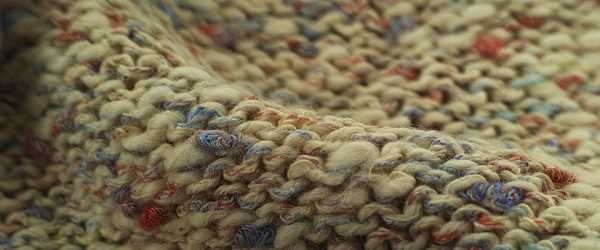


When it comes to doing laundry, many people find themselves unsure about the best temperature to wash their clothes. One common concern is whether washing at 60°C can shrink clothes. In this article, we will explore this question and provide expert tips and advice to help you make the best decision for your laundry routine.
Washing clothes at higher temperatures, such as 60°C, can indeed cause some fabrics to shrink. This is because the heat can cause the fibers in the fabric to contract, resulting in a smaller overall size. However, not all fabrics are equally susceptible to shrinkage. Natural fibers like wool and cotton are more prone to shrinking, while synthetic materials like polyester and nylon are less likely to be affected.
If you want to prevent your clothes from shrinking, there are several steps you can take. First, always check the care label on your garments before washing. The label will provide specific instructions on the recommended washing temperature for that particular item. Following these instructions will help minimize the risk of shrinkage.
Additionally, it’s a good idea to separate your laundry based on fabric type. Washing similar fabrics together can help prevent any potential shrinkage from affecting other garments in the load. For more delicate items, consider using a gentle cycle or hand-washing them to reduce the risk of shrinkage even further.
Overall, while washing at 60°C can cause some fabrics to shrink, taking proper precautions and following care instructions can help minimize this risk. By being mindful of the materials in your clothing and adjusting your washing routine accordingly, you can ensure that your clothes remain in great shape and size after each wash.
Does Washing at 60°C Shrink Clothes? Expert Tips and Advice
Washing clothes at higher temperatures can indeed cause shrinkage, especially if the garments are made of natural fibers such as cotton or wool. When exposed to hot water and heat from drying, these fibers can contract, resulting in a smaller size. Therefore, it is essential to take precautions when washing clothes at 60°C to minimize the risk of shrinkage.
Here are some expert tips and advice to prevent clothes from shrinking:

- Read the care label: Before washing any garment, always read the care label for specific instructions. The label will indicate the maximum recommended temperature for washing and drying.
- Sort clothes by fabric: Separate clothes according to fabric types to prevent any potential damage. Delicate fabrics such as silk and cashmere should be washed separately or in a laundry bag to protect them from rougher fabrics like denim or towels.
- Use cold or warm water: Instead of using hot water, opt for cold or warm water settings on your washing machine. Lower temperatures are less likely to cause shrinkage.
- Avoid excessive agitation: Select a gentle or delicate cycle setting on your washing machine to minimize the amount of agitation your clothes will experience.
- Avoid using the dryer: Air-dry your clothes whenever possible to avoid the additional heat and tumbling motion of the dryer, which can contribute to shrinkage. If you must use a dryer, opt for a low or delicate heat setting.
Conclusion
While washing clothes at 60°C can potentially shrink them, taking proper precautions can help mitigate this risk. By following the expert tips and advice mentioned above, you can keep your clothes in good condition and prevent them from shrinking.
Remember to always check the care label and sort your clothes by fabric type to ensure the best possible care. Washing at lower temperatures or air-drying can help preserve the size and fit of your garments.
The Science Behind Clothing Shrinkage

When it comes to washing clothes, many people are concerned about the potential shrinkage that can occur. Understanding the science behind clothing shrinkage can help you determine the best washing methods and avoid unwanted surprises.
Why do clothes shrink?
Clothing shrinkage primarily occurs due to the combination of heat, moisture, and agitation during the washing process. When garments are exposed to these factors, the fibers in the fabric can contract and become smaller in size.
Most fabrics are made up of long chains of molecules called polymers. These polymers can be stretched out when the fabric is woven or knitted. Heat, moisture, and agitation cause these polymers to return to their original state, resulting in the fabric shrinking.
Factors that influence shrinkage
Several factors can contribute to the extent of shrinkage when washing clothes:
- Fabric type: Different fabrics have different levels of shrinkage. Natural fibers such as cotton and wool tend to shrink more than synthetic fibers like polyester.
- Temperature: Higher washing temperatures increase the likelihood of shrinkage. Hot water can cause the fabric fibers to contract more.
- Agitation: Vigorous agitation, such as in a washing machine with a high spin cycle, can increase the chances of shrinkage.
- Drying method: Tumble drying on high heat can further shrink clothes, especially if they are already slightly shrunk from the washing process.
Preventing shrinkage
While some shrinkage may be unavoidable, there are steps you can take to minimize it:
- Follow garment care instructions: Always read and follow the care instructions on the clothing label. These instructions often provide specific guidelines for washing and drying to prevent shrinkage.
- Wash in cold water: Lowering the temperature can reduce the chances of shrinkage. Cold water is generally gentler on fabrics and can help preserve their original size.
- Hand wash delicate items: Delicate fabrics may require hand washing to avoid excessive shrinkage. Gently wash these items in cool water and avoid twisting or wringing them.
- Air dry: Instead of using a tumble dryer, air drying clothes can help prevent shrinkage. Lay garments flat or hang them up to dry naturally.
By understanding the science behind clothing shrinkage and taking the necessary precautions, you can ensure that your clothes maintain their original size and shape for longer.
Effects of Washing at Higher Temperatures
1. Shrinkage
One of the main effects of washing clothes at higher temperatures, such as 60°C, is that it can cause shrinkage. This is especially noticeable in garments made from natural fibers like cotton or wool. The heat can cause the fibers to contract, resulting in the garment becoming smaller in size.
To minimize shrinkage, it is advisable to read the care instructions on the clothing label before washing. If the garment recommends washing at lower temperatures, it is best to follow those instructions to prevent shrinking.
2. Color Fading
Higher temperatures can also lead to color fading in clothes. This is particularly true for brightly colored or dyed garments that are not colorfast. The heat can cause the colors to bleed or fade, resulting in a duller appearance.
To preserve the vibrant colors of your clothes, it is recommended to wash them at lower temperatures or use color-preserving detergents specifically designed for colored garments.
3. Wear and Tear
Washing clothes at higher temperatures can accelerate wear and tear on fabrics. The agitation and heat can cause fibers to break down more quickly, leading to fabric damage and reducing the lifespan of the garment.
To prolong the life of your clothes, it is advisable to wash them at lower temperatures and use gentle washing cycles. This can help prevent excessive wear and tear and keep your clothes looking newer for longer.
4. Energy Consumption
Another important consideration when washing clothes at higher temperatures is the energy consumption. Hotter wash cycles require more energy to heat up the water, resulting in higher utility bills and increased carbon emissions.
To reduce energy consumption and environmental impact, it is recommended to wash clothes at lower temperatures whenever possible. This not only saves on energy costs but also helps to reduce greenhouse gas emissions.
5. Stain Removal
While higher temperatures can enhance stain removal, it is not always necessary to wash clothes at 60°C. Many stains can be effectively removed at lower temperatures, especially if treated promptly. Using a pre-treatment stain remover or soaking stained garments can help loosen stains before washing.
By adjusting the water temperature according to the type of stain and fabric, you can achieve successful stain removal without the need for higher temperatures.
Conclusion
Washing clothes at higher temperatures, such as 60°C, can have various effects on garments. From shrinkage and color fading to increased wear and tear, it is important to consider the potential consequences before choosing a washing temperature. By following care instructions, washing at lower temperatures, and using gentle cycles, you can help preserve the quality and longevity of your clothes while reducing energy consumption and environmental impact.
Expert Tips for Preventing Shrinkage
- Pay attention to fabric labels: Different fabrics have different shrinkage rates. Always check the care label for specific instructions on washing and drying.
- Wash in cold water: Washing clothes in cold water can help minimize shrinkage. Cold water is less likely to cause fabrics to shrink compared to hot or warm water.
- Avoid high heat drying: High heat drying can cause clothes to shrink. Opt for air drying or tumble drying on a low heat setting to prevent shrinkage.
- Use a gentle cycle: The agitation in a regular cycle can contribute to shrinkage. Use the gentle or delicate cycle on your washing machine to minimize the risk of shrinkage.
- Avoid over-drying: Over-drying clothes can make them shrink. Remove clothes from the dryer while they are still slightly damp and let them air dry the rest of the way to prevent shrinkage.
- Reshape and lay flat to dry: For delicate or prone-to-shrink fabrics, reshape them while damp and lay them flat to dry. This can help maintain their original shape and prevent shrinkage.
- Consider pre-shrinking: For fabrics that are known to shrink, such as cotton, consider pre-shrinking them before sewing or wearing. To pre-shrink, wash the fabric in the same manner you would wash the finished garment.
- Avoid excessive agitation: Agitating clothes too much during washing can lead to shrinkage. Avoid overloading the washing machine and limit the number of items being washed at once to reduce agitation.
- Choose the right size: Properly fitting clothes are less likely to shrink significantly. Choose the right size when purchasing garments to ensure a better fit and reduce the risk of shrinkage.
Best Practices for Washing Different Fabrics
Cotton
Cotton is a durable fabric that can generally withstand high temperatures. It is safe to wash cotton garments at 60°C without significant shrinking. However, always check the care label on the clothing item for specific instructions as some cotton fabrics may still require delicate care.
Wool
Wool is a delicate fabric that requires special care when washing. It is recommended to wash woolen items in cold water or at a maximum temperature of 30°C to avoid shrinking. Use a gentle wool detergent and avoid agitating or stretching the fabric too much during the wash. Air dry wool garments in their natural shape to preserve their form.
Silk

Silk is a delicate and luxurious fabric that requires extra care when washing. It is best to hand wash silk items using a mild detergent or special silk wash. Avoid soaking silk garments for too long and gently agitate the water to remove any dirt or stains. Rinse silk items in cold water and avoid wringing or twisting the fabric. Dry silk garments by laying them flat on a clean towel.
Polyester
Polyester is a synthetic fabric that is known for its durability and resistance to shrinking. It can generally be washed at higher temperatures, including 60°C, without significant shrinkage. However, always check the care label on the garment for specific instructions as some polyester fabrics may require lower temperatures or delicate care.
Denim

Denim is a sturdy fabric that can withstand higher temperatures. Most denim items can be washed at 60°C without shrinking. However, it is recommended to wash dark or colored denim separately to prevent color bleeding. Turn denim garments inside out before washing to minimize fading. Air dry denim items or use a low heat setting in the dryer to preserve their shape.
Delicate or Embellished Fabrics

Delicate fabrics such as lace, chiffon, or garments with embellishments like beads or sequins require special care. It is best to follow the care instructions on the garment’s label for washing these items. In general, it is recommended to hand wash delicate fabrics or use a delicate cycle with a gentle detergent. Avoid rubbing or stretching the fabric and air dry flat to prevent damage.
General Tips
- Always check the care label on the garment for washing instructions.
- Sort laundry by fabric type and color to prevent color bleeding or damage.
- Use the appropriate detergent for each fabric type.
- Avoid overloading the washing machine to allow the fabric to move freely.
- Consider using a laundry bag or pillowcase for delicate or small items to protect them during the wash.
- Air drying is generally gentler on fabrics and helps to prevent shrinkage.
- If using a dryer, use a low heat setting and remove the clothes promptly to prevent excessive shrinking or wrinkling.
| Fabric Type | Recommended Washing Temperature |
|---|---|
| Cotton | 60°C |
| Wool | Cold water or maximum 30°C |
| Silk | Hand wash or follow garment care label |
| Polyester | 60°C or follow garment care label |
| Denim | 60°C |
| Delicate or Embellished Fabrics | Hand wash or follow garment care label |
FAQ
Does washing clothes at 60°C shrink them?
Washing clothes at 60°C can potentially cause some shrinkage, especially for fabrics like cotton and wool. Higher temperatures can cause the fibers to contract and shrink. To minimize shrinkage, it’s recommended to follow the care instructions on the clothing label and use a lower temperature setting if necessary.
How can I prevent clothes from shrinking when washing?
To prevent clothes from shrinking when washing, there are a few steps you can take. Firstly, always check the care instructions on the clothing label and follow them carefully. If the label suggests washing at a lower temperature, do so. Secondly, avoid using the dryer on high heat as it can also cause shrinkage. Lastly, be mindful of the type of fabric you are washing. Some fabrics, like cotton, are more prone to shrinkage, so consider washing them on a gentle cycle or by hand to reduce the risk.
Is it safe to wash all clothes at 60°C?
While washing clothes at 60°C may be safe for certain fabrics, it is not recommended for all clothes. Delicate fabrics like silk or synthetic materials may not withstand high temperatures and could be damaged or shrink. Always check the care instructions on the clothing label to determine the appropriate washing temperature.
Can I use hot water to shrink clothes intentionally?
Yes, using hot water can be an effective way to intentionally shrink certain fabrics. However, it’s important to note that not all fabrics will shrink in hot water and some may become damaged instead. If you want to shrink a specific item of clothing, it’s best to do a test patch first to see how it reacts to the hot water. Additionally, keep in mind that repeated hot water washing can cause excessive wear and tear on the fabric.











